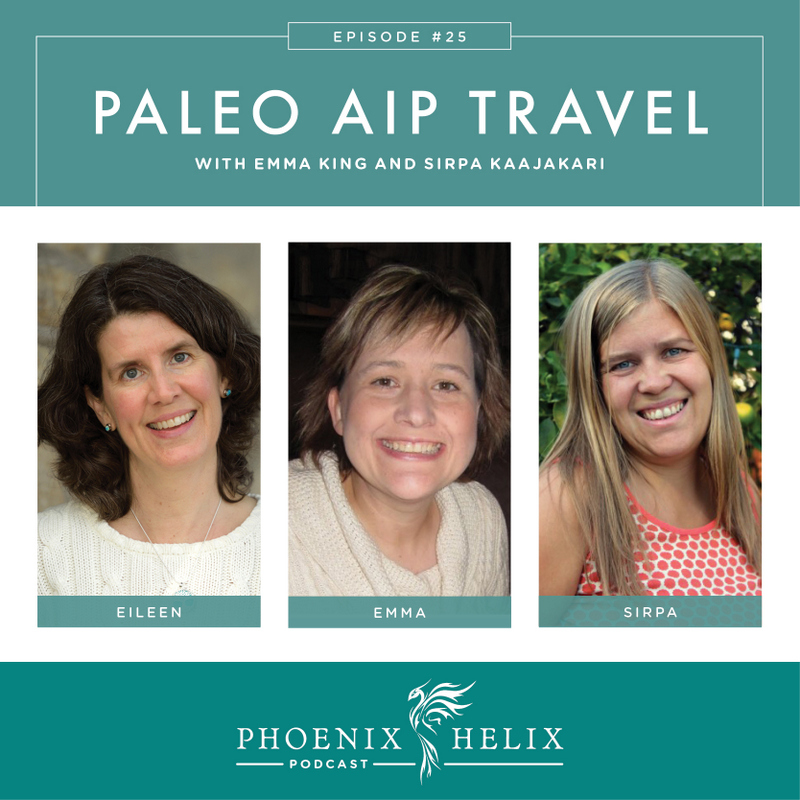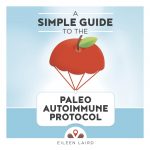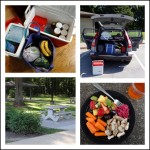The World is a Big and Beautiful Place
When we’re on a healing diet, our kitchens become our safe places. It’s where we prepare delicious food that helps our body heal, with no worry of cross-contamination or hidden ingredients that can cause an autoimmune flare. However, we don’t want to feel trapped at home. Many of us have loved ones spread across the globe, and there are also so many beautiful places to visit. How can we travel with confidence, and stay healthy at the same time?
I’ve been on a healing diet for three years now, and I have traveled extensively. My two guests have traveled even more than me. We share advice for everything from plane travel to road trips, international adventures, camping, business trips, Disneyworld and more. Pack your bags! Fun awaits.
Listen to the Show
- Subscribe to my podcast through your favorite podcast app: iTunes, Stitcher, Google, TuneIn, Spotify, Amazon, etc.
- You can also listen to the episode right here through the player below, and if you subscribe to my newsletter you’ll get notified of future episodes.
Podcast: Play in new window | Download
Show Notes
- Intro (0:00)
- Meet Our Guests (0:51)
- Sirpa Kaajakari is the blogger behind Kaiku Lifestyle. She follows a personalized paleo autoimmune protocol (AIP) and has completely healed her eczema, digestive issues and blood sugar imbalances. Removing grains made the biggest difference for her health, and the AIP fine-tuned the details.
- Emma King is reversing rheumatoid arthritis through the AIP. She developed chronic fatigue syndrome when she was a teenager and her mother put her on an elimination diet. After a year of exhaustion, the diet turned her health around. Then after the birth of her daughter in 2008, she developed RA. She first went gluten-free, then paleo, and finally AIP in 2013. While she noticed improvement with each level of diet, the AIP made the biggest difference, because she learned that nightshades are one of her biggest triggers.
- Our Top Travel Snack Recommendations (8:27)
- Emma: (1) Epic Bars: Bison Bacon Cranberry, Uncured Bacon Bar, and Beef Apple Bacon (2) Wild Planet Tuna and Salmon. (3) Plantain Chips.
- Sirpa: (1) Raw Fruit and Vegetables. (2) Avocados and Olives Note: check ingredient list on olives to avoid allergens and additives, and be sure they don’t contain pimentos (which are a nightshade). (3) Wild Planet Sardines.
- Eileen: (1) Wild Zora Lamb Rosemary Bar. (2) Rosemary Pork Clouds (no longer available, but see other snack options here). (3) Pouched Tuna and Salmon.
- The Best Food For Short Plane Trips (11:34)
- Sirpa: just eats a good meal before and brings along a couple of the snacks mentioned above.
- Emma: brings liver paté and an apple. She packs the paté frozen, to keep it fresh, and it defrosts by the time she’s ready for a snack.
- Eileen: prepares a simple lunchbox of cooked chicken or beef, some raw vegetables and avocado. Don’t forget the fork!
- Best Food for Long Plane Trips (14:14)
- Emma: often takes the opportunity to do some intermittent fasting on a long plane trip. She brings her own teabags and collagen and just asks for hot water. She also takes probiotics and vitamin C to protect herself from the germs on the plane. If she does eat, she’ll bring a simple meal like chicken tenders, salad and olives, and she also packs an extra meal in case of plane delays. She also brings avocados, apples and bananas which all travel well.
- Sirpa: is from Finland originally and she and her family travel there regularly. It’s a 20-hour trip with plane changes, and she packs food for the entire family in ziplock bags. She’ll freeze some of them so they stay fresh longer and thaw during the trip: (1) coleslaw or salad (2) meatballs or chicken drumsticks (3) paleo muffins or crackers (4) fermented vegetables which don’t need refrigeration (5) and all the snacks mentioned earlier in the podcast.
- Resource: eBags Carryon Cooler.
- Our Best Advice for Road Trips (19:27)
- Emma: ideally likes to travel by RV with a fridge/freezer. If she’s in a car, she brings a powered cooler which plugs into the car outlet and has the option to keep food hot as well. She also brings her Crockpot, and in the RV she can have dinner cooking so it’s ready when they reach their destination. Crockpot also sells a small model designed to plug into a car outlet.
- Eileen: My road trips usually last two days on the way to visit family. We bring a small cooler with the food we’ll eat during the travel days. Then we bring a big cooler with food for our destination; we put dry ice in the big cooler and don’t open it during the trip. Some of the things I bring with me in the big cooler are: (1) Mason jars full of my favorite breakfast soup. (2) And lately, I’ve added Paleo on the Go Frozen Meals, to make travel even easier. I also bring AIP treats when I travel to keep me from being tempted by more harmful junk food on the road. (Keep in mind that treats shouldn’t make up a big part of a healing diet.) Resource: my article on AIP Road Trips.
- Sirpa: brings her camp stove and uses it at rest areas. She also brings a toaster oven and a blender, so that if they end up in a hotel without a full kitchen, they have options. She also loves her Yeti cooler, because it can keep food cold for days.
- Restaurant Advice (25:25)
- Emma: uses the Find Me Gluten Free to find restaurants while traveling. Her favorite chain restaurant is Red Robin. They have separate fryers for their sweet potato fries. They have a lettuce wrap option on their burgers. And they have an allergy app that they bring to your table to help you order safely. The only thing missing from the app is nightshades, so you need to ask about that. On business trips, she often asks her client to choose Japanese restaurants where she can order sashimi, or a flame-grilled steakhouse.
- Eileen: I created a list of 100% gluten-free restaurants that are also paleo-friendly. Otherwise, I request the gluten-free menu, let the waiter know up-front that I’m a good tipper, and choose one or two items I think might work with my diet and ask them to double-check with the chef. Usually, it’s a steak and unseasoned steamed vegetables. I bring a travel bottle of olive oil and bring my own Herbamare seasoning with me.
- Our Preferred Lodging (33:43)
- Sirpa: likes to camp and also rent cabins in state parks. For hotels, she likes Residence Inns because they have kitchens. She also likes to stay at friends’ homes along the way. With friends, she offers to do the cooking for everyone, so she knows it’s safe food. She also brings her own dish brushes, wooden spatulas and frying pan, to avoid gluten cross-contamination.
- Emma & Eileen: both love Airbnb, choosing to rent the separate lodgings with independent kitchens. If that’s not an option, we look for hotels with a kitchen or kitchenette.
- Special Trip Circumstances (40:02)
- Camping Advice from Sirpa: (1) Be sure you have a good camp stove and cooler. Sirpa likes a Yeti cooler because it’s bear-proof. (2) Prepare as much of your food in advance as possible. Some of Sirpa’s favorite camp food is: cabbage casserole, breakfast sausage, and plantain pancake batter. (3) Resource: Sirpa’s Camping article on her blog. (4) If you want backpacking tips, checkout Backcountry Paleo.
- Disneyworld Advice from Emma: Disney excels at accommodating special diets. Avoid fast food in the theme parks; seek out the restaurants instead and speak to the chef. They’ll create a meal especially for you. However, you need to plan on extra time. If you’re staying in a Disney hotel/resort, you can ask the kitchen to prepare meals for you to take to the theme parks. They’ll pack your meal in ice and label it as allergen-specific food. Because it’s prepared by a Disney hotel, they allow it into the parks.
- Cruise Ship Advice: Article by Shanna Nemrow.
- Business Trip Advice from Emma: Contact the hotel kitchen and any restaurants you’ll be visiting on the trip – in advance. Giving them time to prepare for your special dietary needs will make for a much smoother experience, rather than stressing out the chef by springing special requests on them at the last minute. She also lets her business clients know about her special diet in advance so that she can consult on the restaurant choices. Resource: Business Travel article from Field Notes on Healing.
- International Travel Advice from Emma & Sirpa: While you can bring food on the plane, you will often get stopped if you try to carry food off the plane when traveling between countries. Absolutely no fresh meat or produce is allowed through. After that, countries vary on whether packaged food will be allowed through. You can try – just know that the customs agent might confiscate it. The USA tends to be stricter than Europe. Australia and New Zealand are also very strict.
- Managing Stress While Traveling (57:27)
- Sirpa: Do as much planning, research and preparation in advance as possible, so you can relax on the trip. Then, incorporate mindfulness during travel as well – deep breathing during stressful moments.
- Emma: makes sure she plans enough time to sleep on her trip, and to adjust to jetlag and time differences when traveling internationally. Her favorite stress-relieving breathing technique is crocodile breathing and she does it every day.
- Eileen: no longer takes early morning or red-eye flights, or leaves for road-trips at dawn. Instead, I prioritize sleep, knowing how important it is to my autoimmune health. I eat a good breakfast at home and travel in the late morning or early afternoon.
- Resource: Gutsy By Nature’s Healthy Travel article.
- Outro (1:05:17)
- Sirpa blogs at Kaiku Lifestyle..
- Update 2020: Emma has retired from blogging and health coaching. She continues to travel, parent, and work full-time in a different career.
- For more travel resources, check out my Travel Series here on Phoenix Helix.
- Eileen (your podcast host) is the author of multiple books, written to help people thrive with autoimmune disease. Learn more on the Books Page.
- If you like this podcast, follow or subscribe through your favorite podcast app. You can also subscribe to Eileen’s biweekly newsletter.
- Check out the entire archive of podcast episodes.
You May Also Be Interested In
Spreading the Word
If you like the podcast, please leave a positive review in iTunes. It would mean the world to me, and also helps others find the podcast. Here are some quick instructions using your iPhone:
- If you are already subscribed to my podcast: (1) Click the purple podcast icon. (2) At the bottom of the screen, click Library. (3) At the top of the screen, click Shows. (4) Click the Phoenix Helix podcast image. (5) Scroll down the page, and you’ll see Ratings and Reviews. Scroll down a little bit more and click on Write a Review. This will bring up the review screen. Tap 5 stars (if you love the podcast), and then click in the title box, and it will bring up the keyboard. Enter a title and short review. (6) Click Send in the upper right corner. (7) Thank you! Positive reviews give the podcast a higher search ranking in iTunes, helping people find it and letting them know it’s a quality podcast and worth their time to listen.
- If you haven’t subscribed to my podcast: (1) Click the purple podcast icon. (2) In the lower right corner, click the magnifying class. (3) Type Phoenix Helix in the search box. (4) Click the podcast cover in the Show list. (5) If you’d like to subscribe, click the + sign at the top of the screen. (6) To write a review, scroll down the page, and you’ll see Ratings and Reviews. Scroll down a little bit more and click on Write a Review. This will bring up the review screen. Tap 5 stars (if you love the podcast), and then click in the title box, and it will bring up the keyboard. Enter a title and short review. (7) Click Send in the upper right corner. (8) Thank you! Positive reviews give the podcast a higher search ranking in iTunes, helping people find it and letting them know it’s a quality podcast and worth their time to listen.









You should look at the wonderbag (http://www.wonderbagworld.com). It’s a slow cooker with no power needs. Great for road trips.
David, how cool is that? Thanks for sharing.
Hi Eileen,
I love your podcast.
I am planning a trip to Europe from Australia at the end of year and i was very interested in your tips for overseas travel.
I am confused whether or not fresh food is allowed on the planes for long trip overseas? Is it a luck thing whether custom is going to allow me to go through with salad in ziplock in my carry on for food allergy reasons? What shall i pack to be sure to have safe food for me during the flight, in stop over airport and in the last flight? I am happy to cook fresh, froze or do anything to have a “non flare” travel. I remember how i dislike travelling for the bloating, general unwell feeling that i get after long plane flight, so i am committed to prepare anything needed to have a joyful and healthy experience this time.
Then i guess i can bring things for once i reach my destination and i am happy to put that in my checked in luggage for when arriving in Europe.
On the way back, though, it is a different story because Australia does not allow anything to come in the country (i think mainly fresh, but it might alos include packaged food)… so it can be tricky as well to plan to have no food in checked in luggage and eat everything during the 24hr trip from Europe back to Australia. Any tips or thoughts on how to manage that? The alternative is to throw away any excess at the Australian airport as there are bins available as soon as we stepped off the plane.
Also we will have our 9 months old baby with us, hence i’ll prepare food for him as well, in our carry on (not checked in luggage). Again, is it okay to bring fresh food for him (mashed up or finger food ) or it has to be prepackaged?
Any information is appreciated or resources i can look up. I will contact the airline and customs officer prior to the trip which will consitute a part of my pre-travel preparation… This is what it takes to be responsible about my health.
Hi Isabelle. There’s no problem bringing food ON the plane. The problem is when you disembark. Just make sure you eat all perishables before landing. And you’re right that customs agents can be picky about what food is brought into the country even when it’s packaged – that’s always a risk that it might get taken away. That’s why Emma said her first activity upon landing is hitting the grocery store and sourcing food. I hope that helps. Emma and Sirpa both shared the details of all the foods they brought on the plane for their international trips. I know this episode contained a LOT of information. It’s worth a second listen before your trip, to help you decide what to bring with you. When you get back, let us know how it goes! It sounds like a beautiful adventure.
Dear Eileen,
I am back from our trip and wanted to share what happened and what i got from it to benefit the community of people with an auto-immune disease.
Prior to the trip:
– i bought collagen tablets, yet i left them in Australia as i did not manage to check all ingredients in them prior to leaving home. A mistake, it would have helped to have them on the trip.
– saw my practitioner that assisted me with herbal to help digestion as we knew that i might not be 100% compliant during the trip.
– send a letter to all the people that were going to have us for some meals and prepared a meal plan when we were renting a place with our own kitchen sharing with friends. One person declined to prepare food due to the complexity of it and i was grateful for her honesty. Other people embrassed the challenge and we had fun, it also opened up many conversation about the auto-immune condition and open the eyes of my husband.
For the plane trip to Europe, i had prepared salad for me on the plane with chicken, leafy green, carrot, cucumber, avocado, etc… with the dressing on a small travel shampoo plastic container. It worked well, but the salad were too large, and the last one of the 3 bags was completely cooked and impossible to eat by the end of the 24hr journey. I did not take an ice-pack, just an eski (lunch size) which might have been part of the problem. I would recommend to people to package things separetly in zip lock bags (carrot in a bag, leafy green in another bag, chicken in another, avocado and so on). Keep the dressing separate as well.
I also took vegetable crisps to have something to snack on and bananas. That was nice and i recommend it.
I had ordered gluten free meal with the airline, and i called to check what that ‘gluten free’ title meant. So it includes grains, soy, dairy, sugar, etc… So i knew that i could not rely on the gluten free meals provided by the airline.
I also brought with me plenty of water, which was allowed to go through as i pretented that it was boiled water for our 9 months old boy.
The first plane was departing Australia a 6 am which meant waking up at 2:30 am, and leaving the house by 3:30 am. I would recommend people to book their plane during day time to ensure a nice restful night sleep prior to travelling. Even better, depart on the night flight so you can sleep on the way there and the trip will feel shorter.
On the way back, i did things differently. I had carrot, apple and oranges, a bag of crisps carrot and some tuna and keepers fillets in cans.
The tuna and keepers fillet did not pass French customs because they were more than 100grs each can. So beware of that limitation and buy smaller cans than 100grs.
I ate what i could when i was hungry, i also had plenty of water, and finally ate part of the airline provided gluten free meal (prior to landing in Australia after 19hrs of travelling) as i was hungry and a little sick of carrot, apple and orange.
During my trip in Europe, i found some kumbucha, which was great, and i also ate some non AIP compliant food such as croissant, cakes and pain au chocolat. So I am now feeling quite unwell with high level of fatigue, feeling sluggish and a transit that has stopped working. This is time to nurture myself with bone broth, organ meat and salad!
I hope that those points above will help future travellers.
Great podcast, Eileen, thanks for the work that you do. You are an important support for me either for knowledge sharing or recipe roudtable (how fantastic especially for offal recipes).
Isabelle, thanks for writing such a detailed review of your trip – both what worked and what didn’t. We can all learn so much from each others’ experiences. Wishing you happy and healthy travels in the new year!
I am going on a 5 day trip at the end of the week, and I have only been on AIP for 2 1/2 months. I didn’t even think about what I was going to eat until today and started panicking. Then I saw your podcast about travel. So happy I did. Now I feel prepared.
I’m so glad, Lisa. Happy travels! And if you think of it, come back and let us know how it went.
I went to Boston and the coast of Maine for 4 days. I took a salad, plantain crackers and some fruit for the plane. I managed to get baked fish or salad with a protein on it when we went out. I bought Epic bars for emergencies. They came in handy. I’ve been on AIP for almost 4 months and I haven’t had a hard time at all. I realized why this weekend. I haven’t had to eat out 12 meals in a row before. Lol. My husband was so supportive. He asked questions of the waitress when I wouldn’t. I have a slight headache today, but all in all, I’d say I did pretty well. Thanks for all the advice and support.
It sounds like you had a great time! Way to stay on the AIP, Lisa. And gold star for your husband, too.
Thanks for this podcast Eileen! I wanted to share a tip that I use on road trips. We have family about 12 hours away and almost always drive there. I pre-cook my meals and freeze them in individual containers. I use ice to keep them frozen till we reach our destination, then stick in the freezer. It makes my life so much easier cause I’m not having to fight for kitchen space while we are having our visit.
That’s a great idea Sarah! It’s the homemade version of the Paleo on the Go meals I used on my last trip. Thanks for sharing.
This podcast couldn’t have come at a better time! I’m taking a quick trip up to the Bay Area for work this weekend and these tips are proving invaluable. Thank you Eileen for your amazing insight & incredibly helpful and supportive podcasts. They have been my go-to resource on my healing journey with AIP.
I’m so glad, Lauren! Happy travels. 🙂
This podcast was informative and encouraging — just like all content on your site. Thanks so much!
My pleasure, Christine. Happy travels!